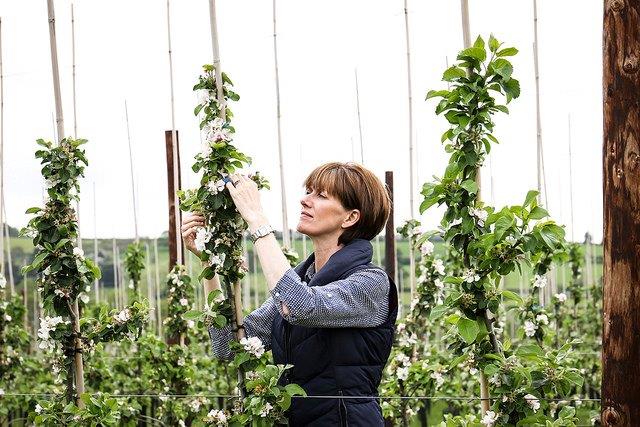Keeping up with the whirlwind of BrexitBy Rachel Anderson

From preparing poinsettias to picking pumpkins, autumn can be a frenzied time of year for the UK’s horticulture industry. Keeping up with the whirlwind of Brexit-related updates during this busy season might therefore have been like following a leaf dancing in the wind – blink and you’ll quickly lose track of its whereabouts. So, as crunch time approaches, let’s some up in a nutshell those Brexit-related events that have been taking place whilst the trees have been changing colour.
Firstly, the shortfall of seasonal labour (which is expected to worsen after Brexit) has unsurprisingly been causing a lot of fireworks. Whilst the government has announced a pilot seasonal agricultural workers (SAWS) scheme for 2,500 fresh produce workers for next year (2019) this, say campaigners, is not enough. The National Farmers’ Union (NFU)’s horticulture and potatoes board chairwoman Ali Capper says: “If you take the current shortages in the sector into account I don’t know where we are going to end up by the end of 2018. We were just over ten per cent short in 2017 and to date we are running at 12.6 per cent short. If we need 70,000 seasonal workers I estimate that we are running somewhere between 8-10,000 short today. So, 2,500 is just a quarter of what we need today.” Furthermore, the All-Party Parliamentary Gardening and Horticulture Group (APPGHG) group is (in its latest report looking at issues affecting the sector) understandably recommending that the government expands this pilot scheme to incorporate ornamental horticulture.
Meanwhile, another political hot potato is the government’s plan, under new immigration rules after Brexit, to give priority to highly-skilled workers over those who head to the UK for low-paid jobs. Ali announces: “Many sectors of industry in the UK will contract if Government continues on its path of closing down routes for low or semi-skilled workers. British horticulture represents 2% of the farmed land area but 25% of the farm gate value. Why would you not want to put the policy measures in place to support that sort of success story? I’ve become so cross with the government that I’ve started a new hashtag campaign, #foodneedspeople.”

NFU's Ali Capper
Arguably, it would be in the interest of our industry to back both Ali’s Twitter crusade and those campaigners who are currently scrutinising the new Agriculture Bill on our behalf. The bill will steadily replace the EU’s Common Agricultural Policy and promises to deliver a “Green Brexit.” The EU’s system of direct payments (based on the total amount of land farmed) will be swapped with a new Environmental Land Management system that will see those farmers and growers who provide the greatest environmental benefits securing the largest rewards.
Whilst campaigners, including the NFU and the Horticultural Trades Association, go through the detail of the bill with a heavy-duty leaf rake, we can enjoy a bit of cheer in the form of the government’s announcement that producer organisations* will continue to be funded until the end of the current parliament (expected in 2022). And so, whilst life after March 29 (2019) still looks a little foggy, we should be supporting those who are avidly campaigning for a Brexit that works for the horticulture industry.
Ali Capper was speaking at this year’s National Fruit Show in Kent last month (October, 2018).
*POs enable groups of growers to receive match-funded investment from the EU.
